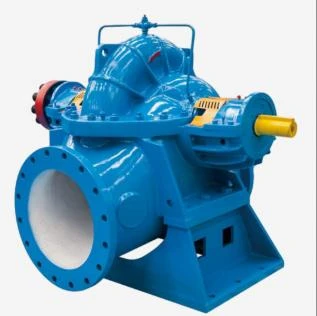Tatar
- Afrikaans
- Albanian
- Amharic
- Arabic
- Armenian
- Azerbaijani
- Basque
- Belarusian
- Bengali
- Bosnian
- Bulgarian
- Catalan
- Cebuano
- Corsican
- Croatian
- Czech
- Danish
- Dutch
- English
- Esperanto
- Estonian
- Finnish
- French
- Frisian
- Galician
- Georgian
- German
- Greek
- Gujarati
- Haitian Creole
- hausa
- hawaiian
- Hebrew
- Hindi
- Miao
- Hungarian
- Icelandic
- igbo
- Indonesian
- irish
- Italian
- Japanese
- Javanese
- Kannada
- kazakh
- Khmer
- Rwandese
- Korean
- Kurdish
- Kyrgyz
- Lao
- Latin
- Latvian
- Lithuanian
- Luxembourgish
- Macedonian
- Malgashi
- Malay
- Malayalam
- Maltese
- Maori
- Marathi
- Mongolian
- Myanmar
- Nepali
- Norwegian
- Norwegian
- Occitan
- Pashto
- Persian
- Polish
- Portuguese
- Punjabi
- Romanian
- Russian
- Samoan
- Scottish Gaelic
- Serbian
- Sesotho
- Shona
- Sindhi
- Sinhala
- Slovak
- Slovenian
- Somali
- Spanish
- Sundanese
- Swahili
- Swedish
- Tagalog
- Tajik
- Tamil
- Tatar
- Telugu
- Thai
- Turkish
- Turkmen
- Ukrainian
- Urdu
- Uighur
- Uzbek
- Vietnamese
- Welsh
- Bantu
- Yiddish
- Yoruba
- Zulu
Telephone: +86 13120555503
Email: frank@cypump.com
Дек . 15, 2024 11:57 Back to list
self priming sewage pump
Understanding Self-Priming Sewage Pumps A Comprehensive Overview
Self-priming sewage pumps are essential components in modern wastewater management systems, offering efficient solutions for the transportation of sewage and waste liquids. This article delves into the workings, advantages, applications, and considerations surrounding self-priming sewage pumps, explaining why they are favored in various industrial and residential settings.
What is a Self-Priming Sewage Pump?
A self-priming sewage pump is a type of centrifugal pump designed to handle and transport sewage and effluent without the need to manually fill the pump with liquid before starting it. Unlike standard pumps that require priming (the process of filling a pump with fluid to prepare it for operations), self-priming pumps can initiate operation without this additional step, making them highly convenient and reliable.
How Do Self-Priming Sewage Pumps Work?
The operation of a self-priming pump is based on the principles of centrifugal force. When the pump is activated, it creates a low-pressure zone that draws liquid into the pump casing. The unique design of the impeller and the casing allows it to trap a certain amount of liquid, which helps create the necessary vacuum to lift additional sewage. As the impeller spins, it forces the sewage out of the discharge pipe, while simultaneously reintroducing some fluid into the pump for continuous operation. This ability to draw water from a source located below the pump makes self-priming pumps particularly valuable in situations where the sewage source is not level with the pump.
Advantages of Self-Priming Sewage Pumps
1. Automatic Priming The most significant advantage is their ability to prime themselves automatically. This feature saves time, labor, and prevents the issues associated with manual priming.
2. Versatility Self-priming sewage pumps can handle a variety of liquids, including those with solid particles, making them ideal for sewage, stormwater, and other waste applications.
3. Reduced Maintenance With no need for constant priming, these pumps are often easier to maintain and operate, minimizing downtime and labor costs.
4. Ease of Installation Self-priming pumps can be installed in various configurations, allowing for flexibility in system design. This adaptability accommodates diverse environments and pumping needs.
5. Cost-Effectiveness Given their efficiency and reduced maintenance requirements, self-priming pumps often lead to lower operational costs over time.
Applications of Self-Priming Sewage Pumps
self priming sewage pump

Self-priming sewage pumps are widely used in several sectors, including
- Municipal Sewage Systems They are essential in wastewater treatment facilities, aiding in the transfer of sewage to treatment plants. - Commercial Buildings Many businesses implement these pumps to manage sewage from restrooms, kitchens, and other facilities.
- Residential Settings Homeowners often rely on self-priming pumps for sump pits, basement drainage, and sewage ejection systems.
- Construction Sites These pumps are utilized for groundwater removal and dewatering, ensuring that construction projects proceed smoothly.
Considerations When Choosing a Self-Priming Sewage Pump
When selecting a self-priming sewage pump, several factors must be taken into account
- Capacity Understanding the flow rate and head height required for effective wastewater management is critical.
- Solid Handling Capability Review the pump's specifications regarding the size and type of solids it can handle to prevent clogs.
- Material of Construction Choose pumps made from durable materials to withstand the corrosive nature of sewage.
- Energy Efficiency With rising energy costs, consider the pump's efficiency ratings to ensure cost-effective operation.
Conclusion
Self-priming sewage pumps represent a remarkable advancement in wastewater management technology. Their ability to operate without manual priming, combined with their versatility and efficiency, makes them indispensable in both industrial and residential applications. Understanding the principles behind their operation and the various factors to consider when selecting a pump is essential for anyone tasked with managing sewage systems effectively.
-
ISG Series Pipeline Pump - Chi Yuan Pumps | Energy Efficiency&Compact Design
NewsAug.03,2025
-
ISG Series Vertical Pipeline Pump - Chi Yuan Pumps Co., LTD.|High Efficiency, Low Noise, Durable
NewsAug.02,2025
-
ISG Series Vertical Pipeline Pump - Chi Yuan Pumps | High Efficiency, Low Noise
NewsAug.02,2025
-
ISG Series Vertical Pipeline Pump- Chi Yuan Pumps Co., LTD.|High Efficiency&Compact Design
NewsAug.02,2025
-
Heavy-Duty Mining Sludge Pumps - Wear-Resistant Slurry Handling
NewsAug.02,2025
-
Horizontal Split Case Pump with GPT-4 Turbo | High Efficiency
NewsAug.01,2025










